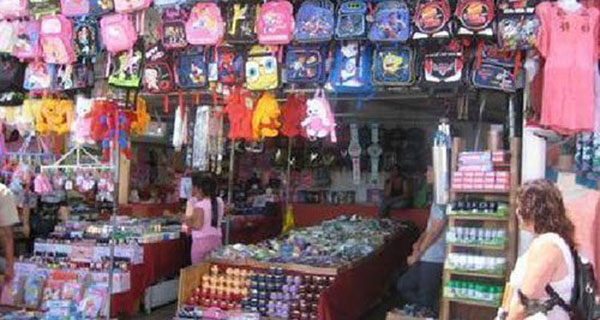 One of the world’s largest flea markets is in San Jose, California. It has more than 2,000 booths and sprawls over 40 acres. In all, 12.8 km (eight miles) of booth-lined walkways with arts, crafts, jewellery, antiques and junk! Lots of junk.
One of the world’s largest flea markets is in San Jose, California. It has more than 2,000 booths and sprawls over 40 acres. In all, 12.8 km (eight miles) of booth-lined walkways with arts, crafts, jewellery, antiques and junk! Lots of junk.
The old saying “One man’s trash is another man’s treasure” tells you something about them.Well, that isn’t always what you find anymore. It’s gotten a lot more commercial but it still draws huge crowds: vendors hoping to make some money, and shoppers hoping for a bargain or at least a day of fun.
Even if you usually go in more for museums and history when you travel, sometimes you can have lots of fun at flea markets around the world, while learning something about that country’s culture at the same time. At the very least, finding one of these giant jumble sales will keep you from getting museum sensory overload!
Take the Marche Aux Puces de Clingnancourt in Paris, which all the French guidebooks mention. It’s a great place to prowl around and find all sorts of vintage French items. While you may not buy anything, it is a great place to prowl around.
Or how about the Portobello or the Camden Passage in London to look at (pricey) antiques? There are antique and junk markets all over London, and, while many have become touristy, if you look hard and bargain you might still find a treasure to take home. There are lots of websites to direct you to all of the possibilities.
You’ll find markets like this all over the U.S, from the Hell’s Kitchen Flea Market in New York to the the Pasadena Rose Bowl Swap Meet which is supposed to be the largest on the West Coast. There’s the “127 Corridor” in the middle of the country. It’s actually a giant once-a-year yard sale that stretches over 600 miles through five states in August.
There’s the Mercat Gotic in Barcelona, Spain. In South America, there is the San Telmo Flea Market in Buenos Aires, Argentina, and in Japan, there’s the Togo Antique Market in Tokyo.
You can find them in many less developed areas too but what really differentiates a flea-type market from the local bazaars? Flea markets typically sell second hand goods. The question then becomes: When do they become antiques? In those developing counties, the next questions is: What is really an antique, and what is just made to look like one? Remember, anywhere you shop, it’s always buyer beware. Far from home, it’s hard to return what you bought.
Go ahead and explore those markets wherever you find them, and if you find that one man’s junk is YOUR treasure buy it and enjoy it.
© Travel Like This
The views, opinions and positions expressed by columnists and contributors are the author’s alone. They do not inherently or expressly reflect the views, opinions and/or positions of our publication.

